In the world of modern consumer behavior, opinions rule, and buying something that doesn’t have reviews is almost unheard of.
Can you remember the last time you made a purchase without checking out what others had to say?
Hard to recall, right?
This creates a situation where businesses need to optimize for the end user (their target audience) to get more sales.
This is where customer review mining comes into play.
In order to provide insight into customer review mining and conversion optimization, I consulted with two experts in the industry:
- Khalid Saleh, CEO of InvespCRO.
- Lorenzo Carreri CRO Expert.
In this article, you will discover the specifics of customer review mining, types of customer reviews, tools, and techniques for customer review mining, industry-specific example stats for customer review mining, etc.
Let’s get started.
Understanding Customer Review Mining
Customer Review Mining is a process that involves extracting valuable insights and data from a plethora of customer reviews.
Think of it as listening to the voices of your customers as they share their experiences, opinions, and satisfaction levels.
By employing various methodologies, businesses can harness the wealth of information embedded in customer feedback to optimize their conversion rates effectively.
One of the primary methodologies used in this process is natural language processing (NLP), which enables computers to understand and analyze human language, allowing for a comprehensive assessment of customer reviews.
Through customer review mining, businesses can better understand their customers’ sentiments, preferences, and pain points. By identifying patterns and trends in the reviews, companies can make informed decisions to enhance their products, services, and overall customer experience.
This iterative process of mining, analyzing, and implementing insights helps businesses stay attuned to their customer’s needs and demands, fostering stronger relationships and boosting conversion rates.
Types of Customer Reviews
Customer reviews come in diverse formats, each offering a unique perspective on a business’s offerings.
Product Reviews
Product reviews are focused assessments of specific items or services, highlighting their strengths and weaknesses. These reviews are instrumental in guiding potential buyers in their purchase decisions, as they provide real-life experiences from other customers.
See this example:
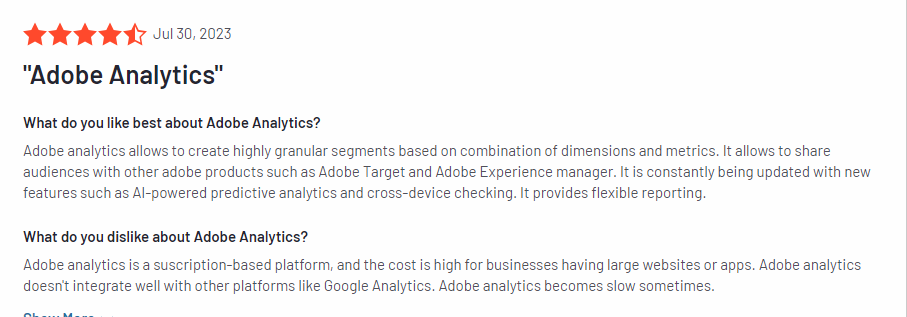
Service Reviews
On the other hand, service reviews revolve around the overall customer experience with a company. They encompass interactions with customer support, website usability, shipping, and other aspects that influence customer satisfaction.

Testimonials
Another essential type of review is the testimonial, which comprises personal accounts of customers’ positive experiences. Testimonials hold substantial persuasive power, as they showcase satisfied customers, building trust and credibility.
Positive testimonials can act as powerful social proof, encouraging potential buyers to convert.

By understanding the different types of reviews, businesses can tailor their strategies to address specific areas for improvement and capitalize on their strengths.
This comprehensive approach to review mining allows companies to build a customer-centric approach that fosters loyalty and boosts conversion rates.
The Impact of Customer Reviews on Customer Purchase Decisions
Customer reviews hold immense power when it comes to consumer purchasing decisions.
In today’s digital landscape, potential buyers have access to vast information at their fingertips, and customer reviews have become a go-to resource for informed decision-making.
When individuals are considering a product or service, they often turn to online reviews to gain insights into the real-life experiences of others who have already made the purchase (I do, and it’s safe to assume you do too).
Positive customer reviews act as influential social proof, validating the quality and value of the product or service in question.
They create a sense of reassurance for potential buyers, affirming that others have had positive experiences and expressing satisfaction with their purchase.
These positive sentiments help build trust in the brand and boost the likelihood of conversion.
On the flip side, negative customer reviews can considerably impact purchase decisions.
They raise red flags and create doubts about the offering’s performance or the company’s customer service. Potential buyers might hesitate to proceed with their purchase if they come across a substantial number of negative reviews or recurring issues mentioned by multiple customers.
Negative feedback can serve as a warning sign and lead potential customers to reconsider their decision, affecting conversion rates.
The transparency and authenticity of customer reviews make them a potent tool for consumers to gauge the credibility and reliability of a business. Unlike carefully curated marketing messages, customer reviews are unfiltered, providing unbiased perspectives from real users.
This honesty resonates with potential buyers, making them more likely to trust the feedback and use it as a crucial factor in their purchasing decision-making process.
Reader Poll/Survey on the Influence of Customer Reviews
A survey of 2000+ U.S. and UK shoppers by Emplifi in collaboration with Harris Interactive revealed:
The survey aimed to understand how consumers perceive and utilize customer reviews when making buying choices. The response from participants was substantial, and the findings shed light on the significant role that reviews play in the decision-making process.
- 87% of consumers said that real-life customer reviews/ratings have a greater impact on purchasing decisions compared to influencer/celebrity reviews (50%)
- More than half of the consumers surveyed (58%) place a high value on product pictures or videos posted by real-life customers when researching products online.
- Survey respondents agree that customer reviews/ratings are the most influential factor in purchasing decisions – outranking price, return policy, and shipping costs when researching products online.
- Regarding product research, there are no distinct differences between Gen X, Millennials, and Gen Z consumers. The majority of each generational category tend to visit one to two websites before making a purchase.
- Brands often think of generations in silos when developing marketing campaigns. It’s a strategic tactic to personalize your messaging. But when it comes to ratings, reviews, and product information, all generations want the same thing: authentic content from real-life customers.
Overwhelmingly, nearly 90% of the respondents stated that they consider customer reviews before purchasing.
This statistic emphasizes the prevalence and importance of customer reviews in today’s consumer landscape. It underscores the fact that reviews have become an integral part of the research phase for potential buyers, guiding their choices and preferences.
Among the participants who consider customer reviews, many of the respondents indicated that original authentic reviews from fellow users hold substantial sway over their decision to make a purchase.
Overall, the survey’s outcomes confirm customer reviews’ influential role in shaping consumer behavior and purchasing decisions.
The vast majority of consumers turn to reviews as a reliable source of information, and businesses that recognize this trend and actively manage their reviews stand to gain a competitive advantage.
Extracting Insights from Customer Reviews
Places To Find Customer Reviews
According to Lorenzo:
‘When I’m working for a client, if they want to improve the sales for a specific product, I just go on the product page of that product, and I just, you know, look at the reviews that they have.
On the flip side, if a client has thousands of products and they’re not interested in improving the sales of one specific product, usually I just go on Google and I put, like, brand name plus reviews to get a feel for the sentiments out there.’
Khalid added this:
‘There are two sides to this. If you’re an ecommerce, the reviews for your products should be on your product pages. You need to do whatever you need to do to get reviews on your product pages.
The other side to this is if you’re selling the same product on Amazon, your competitors are doing the same thing; go ahead and read the reviews on those platforms. The idea is to get customer feedback, which will be translated into insights on selling the product.
How this works is that Amazon won’t go through hundreds of reviews to improve the page where it sells your type of product, but you can do that and use the insights to improve your product pages.’
Categories Of Customer Insights
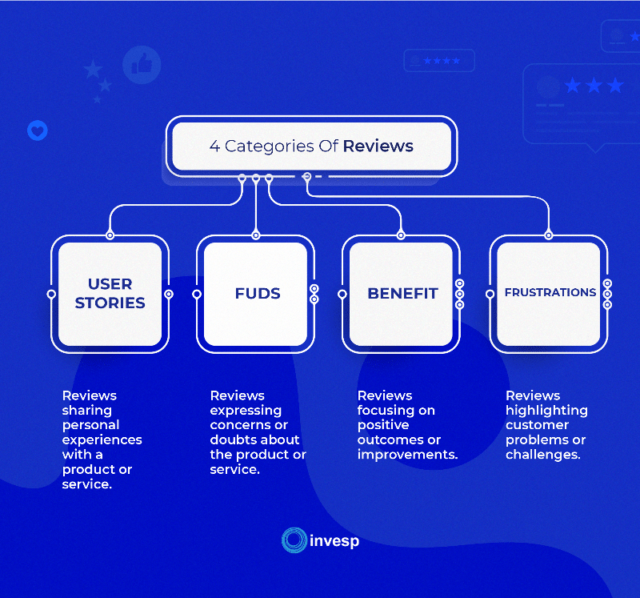
User Stories Review:
User stories review involves collecting and sharing narratives or personal experiences from customers, where they describe their interactions with a particular product or service and the impact it has had on their lives.
These reviews focus on real-life situations and scenarios, often providing valuable insights into how customers utilize the product or service to address their specific needs and challenges.
By understanding these user stories, businesses can gain a deeper understanding of their customers’ perspectives and identify areas of improvement or strengths to capitalize on.
For instance, a user story review for a fitness app might include a customer sharing how the app helped them maintain a healthier lifestyle by providing personalized workout plans and tracking progress, leading to increased energy levels and improved overall well-being.
Benefits Reviews:
Benefits reviews are aimed at showcasing the positive outcomes, advantages, or improvements that customers have experienced after using a particular product or service.
These reviews highlight the value customers perceive in the offering and serve as powerful testimonials for potential new users. By highlighting the benefits, businesses can attract more customers and build a positive reputation in the market.
For example, a benefits review for a skincare product might discuss how the product’s natural ingredients helped in reducing acne, resulting in clearer and smoother skin and thereby boosting the customer’s confidence.
FUDs Reviews:
FUDs reviews stand for “Fear, Uncertainty, and Doubt” reviews, where customers express concerns, doubts, or worries about a product or service.
These reviews often highlight potential risks, drawbacks, or limitations that customers perceive, which can influence their purchasing decisions.
Addressing these FUDs is crucial for businesses as it allows them to clarify misunderstandings, mitigate concerns, and improve the overall customer experience.
For instance, a FUDs review for an online payment platform might express worries about the security of personal information during transactions.
Businesses can respond by explaining the robust security measures in place, alleviating the customer’s fears, and enhancing trust.
Pain Points/Frustration Reviews:
Pain points/frustration reviews shed light on the challenges and difficulties customers have experienced with competitor products or services.
Analyzing these reviews, businesses can identify areas where their product or service can outperform the competition, leading to strategic improvements and competitive advantage.
For example, a ride-sharing service’s pain points/frustration review might highlight issues like long waiting times or poor customer support, prompting another ride-sharing company to emphasize its quick response times and efficient support system.
Implementing Customer Review Insights for Conversion Optimization
1. Tailoring Product Descriptions and Marketing Messages Based on Customer Language:
Customer reviews provide a wealth of information about how customers perceive products and services. By analyzing the language used by customers in their reviews, businesses can gain valuable insights into the key features, benefits, and pain points that resonate with their target audience.
Using the customer’s own language in product descriptions and marketing messages creates a stronger connection with potential buyers.
Highlighting the specific attributes that customers value most fosters a sense of understanding and relatability. It also shows that the company listens to its customers and genuinely cares about meeting their needs.
Moreover, incorporating snippets of positive customer reviews directly into product descriptions or marketing materials adds a layer of social proof.
This practice can be particularly effective in persuading potential buyers who are on the fence about making a purchase. By using customer language to frame product offerings, businesses can increase the relevance and appeal of their messaging, leading to higher conversion rates.
2. Using Customer Feedback to Improve Website Design and User Experience:
Customer feedback serves as an invaluable tool for optimizing website design and user experience.
Analyzing customer reviews can help identify pain points, usability issues, and areas where the website may not meet customer expectations.
Addressing these concerns proactively through website improvements can lead to a more positive user experience.
For instance, if customers frequently complain about navigation difficulties or long checkout processes, streamlining these elements can enhance user satisfaction and encourage more conversions.
Businesses can also implement changes based on positive feedback to highlight elements that customers find enjoyable or helpful.
Improving website visuals, layout, and responsiveness can create a more engaging and seamless user experience, resulting in increased time spent on the site and higher conversion rates.
3. Leveraging Social Proof and Testimonials to Boost Conversion Rates:
Social proof, such as customer testimonials and positive reviews, is a powerful psychological trigger that influences consumer behavior.
Incorporating authentic testimonials prominently on product pages or checkout processes can instill confidence in potential buyers. Testimonials offer real-life accounts of satisfied customers, validating the products’ or services’ quality and effectiveness.
Strategically displaying star ratings, customer satisfaction percentages, or the number of satisfied customers can further reinforce social proof.
Highlighting achievements like “trusted by X number of customers” or “over X positive reviews” strengthens the perception of credibility and popularity.
Additionally, featuring customer success stories or case studies can showcase the tangible benefits customers have experienced, making them more likely to convert.
By leveraging social proof effectively, businesses can create a sense of trust and reliability, nudging potential customers towards making a purchase and ultimately boosting conversion rates.
Tools and Techniques for Effective Customer Review Mining
There are several effective techniques and tools to extract valuable insights from customer reviews, allowing businesses to identify trends, sentiments, and keywords.
These techniques leverage various methodologies, such as natural language processing (NLP) and data mining, to better understand customer feedback.
Before diving into the tools and techniques, let’s see what the experts have to say:
Lorenzo shares:
‘The only tool I’ve used is ChatGPT. What I do is feed the data (reviews) to ChatGPT and get the themes. The results are not super amazing, obviously, but it’s finding a balance between doing it manually and automatically.
There are two values to be considered here, the manual and ChatGPT approach. What I do is cherry-pick a hundred views and do review them manually, and give them to ChatGPT.
With the ChatGPT approach, there is the advantage of speed, but the problem is accuracy. This is because no matter how you prompt ChatGPT, it doesn’t have a CRO brain, like a senior, senior strategy brain, and that’s the value of doing it manually.
With the manual strategy, I read through each word, and not always obviously, but very often when I read a word, my brain triggers like an idea I can use for the page I’m reviewing. So it’s like almost as if going through the reviews allows you to jumpstart your creativity.’
Khalid added this:
‘ For us, there is the manual process where we pulled customer reviews and read through them, looking for patterns and commonalities. It’s a slow process but an insightful one.
Now, we’re utilizing ChatGPT, but the manual process doesn’t go away. It’s kind of a mix of the two where we prompt ChatGPT asking it to look for specific insights from the reviews we shared with it.
Using ChatGPT, we’ve reduced review time by 70%.’
Techniques For Effective Customer Review Mining
Text Mining:
This involves using NLP algorithms to process and analyze large volumes of text data from customer reviews. This technique helps in identifying common themes, sentiments, and patterns within the reviews. Through text mining, businesses can extract keywords and phrases that are frequently mentioned, offering valuable insights into customers’ preferences and pain points.
Sentiment Analysis:
This is a specialized form of NLP that focuses on understanding the emotions and opinions expressed in customer reviews. By classifying reviews as positive, negative, or neutral, sentiment analysis allows businesses to gauge overall customer satisfaction levels. This analysis is particularly useful in understanding how customers perceive products, services, or brand interactions.
Topic Modeling:
This technique automatically identifies topics or themes present in a collection of customer reviews. It enables businesses to categorize reviews into different topics without manual tagging. This process helps in discovering key areas of interest or concern for customers, enabling targeted improvements.
Keyword Frequency Analysis
Analyzing the frequency of specific keywords or phrases in customer reviews can provide valuable insights into what customers value most in products or services. By identifying frequently mentioned keywords, businesses can prioritize and address these aspects to enhance customer satisfaction and drive conversions.
Tools For Effective Customer Review Mining
1. Natural Language Processing (NLP) Libraries:
NLP libraries like NLTK (Natural Language Toolkit) and spaCy provide a foundation for text processing and analysis.
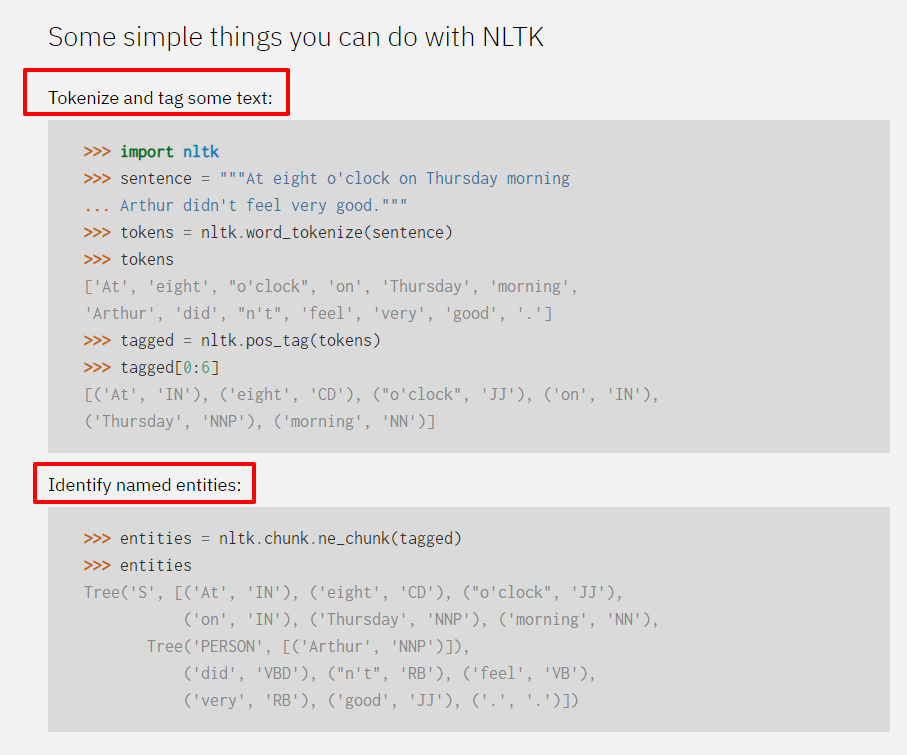
These open-source tools enable businesses to preprocess customer reviews, tokenize text, and perform sentiment analysis, keyword extraction, and topic modeling.
2. Sentiment Analysis Tools:
There are specialized sentiment analysis tools such as VADER (Valence Aware Dictionary and sEntiment Reasoner) and TextBlob that offer pre-trained models for determining sentiment polarity (positive, negative, neutral) in customer reviews.
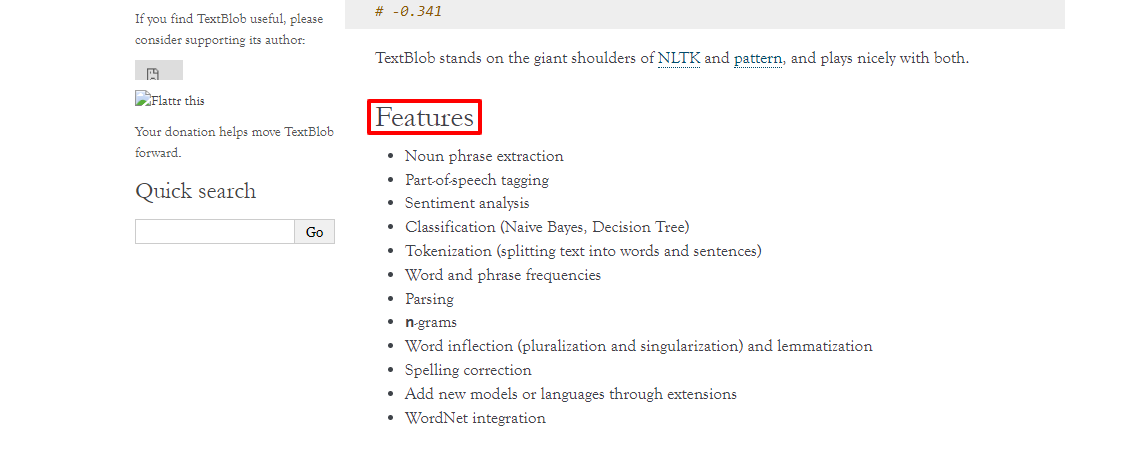
3. Social Media Monitoring Tools:
Social media monitoring tools like Hootsuite, Sprout Social, and Brandwatch can be beneficial for capturing customer reviews and sentiments from various social media platforms.
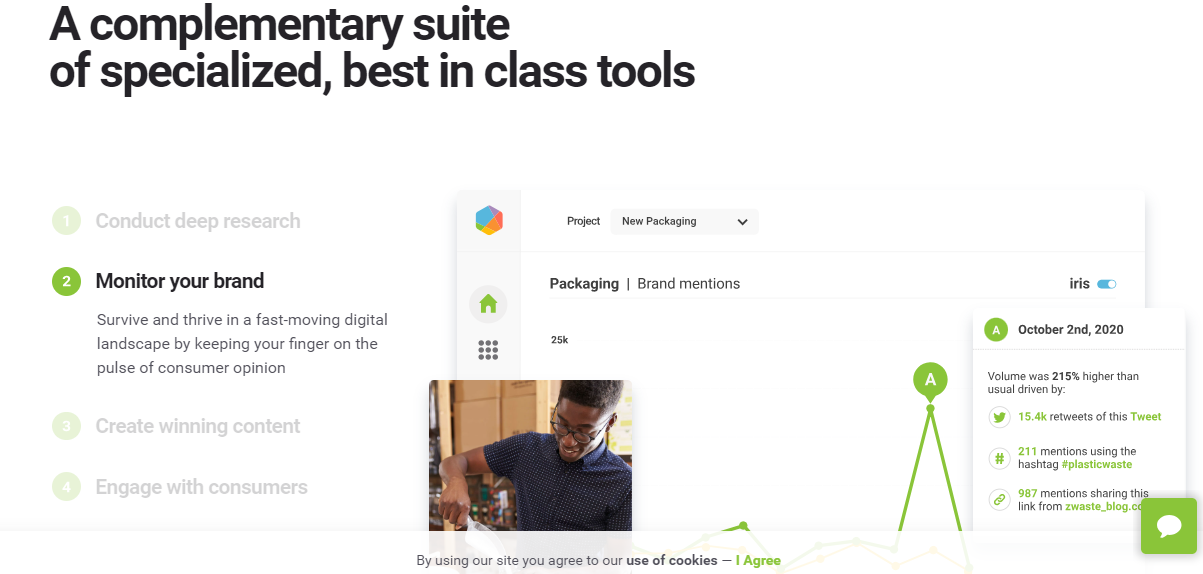
These tools help businesses keep track of online conversations, monitor brand mentions, and collect valuable customer feedback.
5. Review Aggregation Platforms:
Review aggregation platforms such as Trustpilot, Yelp, and TripAdvisor are popular sources for collecting and analyzing customer reviews from multiple sources.
These platforms often provide APIs that businesses can use to access and integrate review data directly into their systems.
6. Survey and Feedback Collection Tools:
Tools like Figpii, SurveyMonkey, Typeform, and Google Forms are helpful for creating customer surveys and feedback forms.
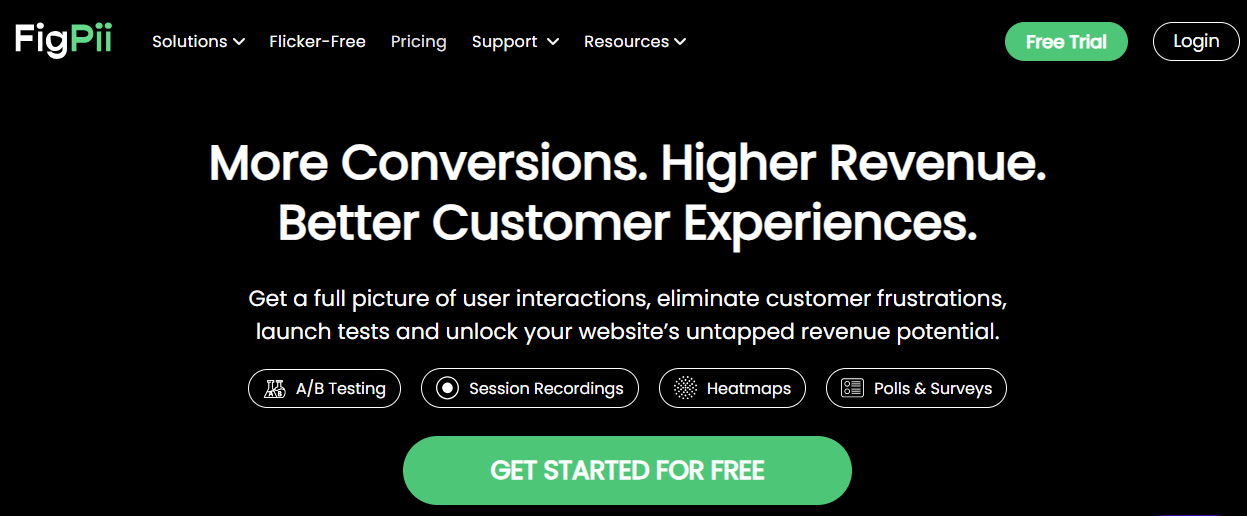
These tools enable businesses to collect structured feedback from customers, making it easier to quantify and analyze their responses.
Features and Capabilities of Different Tools
Each customer review mining tool has its unique features and capabilities. Here’s a brief comparison of some popular tools:
- NLP Libraries: These libraries provide fundamental text processing capabilities and are highly customizable, but they require coding expertise and additional work to build comprehensive solutions.
- Sentiment Analysis Tools: Pre-trained sentiment analysis models make it easy to determine sentiment polarity, but they may not capture nuanced emotions or domain-specific sentiments.
- Text Mining and Analytics Platforms: These platforms offer advanced text analytics and data modeling features, but they can be more complex to set up and may require more significant investment.
- Social Media Monitoring Tools: These tools excel at monitoring social media conversations but may not provide in-depth text analysis like sentiment analysis or keyword extraction.
- Review Aggregation Platforms: Review aggregation platforms are convenient for accessing customer reviews from multiple sources, but they may not offer advanced text analysis features.
- Survey and Feedback Collection Tools: These tools are excellent for collecting structured feedback, but they may not provide advanced text analysis capabilities like sentiment analysis or topic modeling.
Tips on Selecting the Most Suitable Tool for Specific Business Needs:
- Identify Objectives:
Define the specific objectives of customer review mining, such as sentiment analysis, keyword extraction, or topic modeling. Choose a tool that aligns with the primary goals of the analysis.
- Consider Data Sources:
If customer reviews are primarily collected from social media, a social media monitoring tool might be more appropriate. If reviews are scattered across various platforms, a review aggregation platform can be helpful.
- Scalability and Customization:
Consider the size of the review dataset and the need for customization. NLP libraries and text mining platforms offer more flexibility for customizing analyses, while pre-trained tools may be more scalable for large datasets.
- Ease of Use:
Evaluate the user-friendliness of the tool and the level of expertise required to utilize it effectively. Select a tool that aligns with the skill level of the team members who will be using it.
- Integration and Compatibility:
Consider how well the tool integrates with existing systems and data sources. Seamless integration can streamline the process of collecting and analyzing customer reviews.
- Cost and Budget:
Compare the costs of different tools and weigh them against the features and capabilities they offer. Consider the budget constraints and the long-term value the tool provides.
How Can Businesses Utilize Reviews To Improve Conversions?
According to Khalid:
‘Customer reviews help you in 2 different ways. They’re powerful in helping you build trust.
The second way is to figure out the fears, uncertainties, and doubts that people have when they buy the product and also figure out the issues people have now that they’ve bought the product and begun using the product.
This process of mining the reviews and figuring out the FUDs pre- and post-purchase is powerful for any business, and it helps in improving conversions.
How this works is by identifying repeated concerns in reviews, businesses can work these into their sales process, copy, and ads and tackle these concerns head-on.
Something that works that I’ve observed is that you take the biggest concern folks have that keeps coming up in your reviews and attach a guarantee to it (ensure it’s meaningful). This acts as a way of saying, I know you’ve got concerns, but allow us to convince you otherwise.
Another way businesses can use customer reviews to boost conversions is to identify those reviews where customers talk about how they use the product differently than intended.
The idea here is to think of a way to create a product or offer off that new way customers use the product.’
Lorenzo adds this:
‘The advice I give here is to discover the most popular themes of reviews people leave on your site.
So, for example, benefits, what are the anxieties people have before buying? What are the complaints? First, identify those themes. That would be like step one.
Let’s say you discover that one theme is benefit. A lot of people talk about the end results and the benefits that they got from the product. Well, you can talk about those benefits on the landing page and the product page, also, in your ads, you can incorporate those benefits.
At this stage, businesses can use customer review mining as a customer profile discovery tool. This way, you mine reviews as communications between the business and the customer.
So, it’s almost like learning more about your customers, and the words that they use to talk about your product, to talk about their lives, to talk about their experiences and infusing that throughout your business.
Another thing I’ve noticed is that oftentimes, businesses allow customers to upload images or videos of the product but don’t place them in strategic places that can help with conversions.
I remember seeing an example of a coffee brand, and a customer left a review saying that there’s more coffee inside the pod than the competition. And he uploaded an image comparing the pod of this brand versus the competition. I was like, oh my God, that shouldn’t be hidden in a customer review where only a very Few people will see. That image could be much higher on the landing page or even on the product page.’
How To Prioritize Customer Reviews.
Lorenzo says:
‘There are two different ways. One is taking a look at how popular that insight is within the reviews. So let’s say you analyze a thousand reviews, you start tackling themes from the top rather than from the bottom.
The other way would be to find out where else people mention that insight across other data you have collected.
So, for example, you know, if we’re talking about shoes, and the most popular theme is the durability of the shoes, the fact that the shoes last for a very long time.
Well, where else do people mention that across other data points that I have, for example, customer service, customer surveys or interviews I’ve done with customers or customer support tickets, basically, like how popular is that topic across other data that you collected?
If it pops up a lot, that means that you know, it is very important to the user, so it should be tackled first.’
Khalid adds this:
When you do a customer review analysis, you’ll see how often people are mentioning an issue.
Let’s say among the reviews, there’s a recurring theme across 70% of them, while another section of reviews has similar themes and makeup 25%.
This by itself gives natural priority to the theme across 70% of the reviews.’
How Often Should Businesses Do Customer Review Mining?
Khalid says:
‘We do customer review mining for our clients every 5 or 6 months. But it starts with collecting enough customer reviews. If a client doesn’t have enough customer reviews, we push hard, and that includes sending out coupons, and more review focused emails.
Another advantage of pushing for customer reviews is that it helps in building a client’s profile as being trustworthy.
Common Mistakes People Make During Customer Review Mining
Lorenzo said:
‘The first mistake I see businesses make is that they don’t do any form of customer review mining.
Another mistake is that either they do it, but they don’t know how to act on the insights gathered from the reviews.
Lastly, they just do it for one channel that could be, you know, to improve the landing page or to improve the ads and so on, and they don’t disseminate those learnings across other teams.’
Challenges Of Customer Review Mining
1. Volume and Variety of Data:
The challenge:
The vast amount of customer review data generated daily across various platforms can overwhelm businesses trying to make sense of it all.
Additionally, the data comes in diverse formats, including text, numerical ratings, and qualitative feedback, making it challenging to consolidate and analyze effectively.
The solution:
To tackle this challenge, businesses can implement data management and aggregation techniques. Using web scraping tools and APIs, they can gather reviews from different sources into a centralized database.
Prioritizing reviews based on relevance or recency can help focus analysis efforts on the most important and recent feedback.
Employing cloud-based storage solutions allows for scalable and efficient data storage, enabling businesses to handle large volumes of customer reviews more effectively.
2. Unstructured Data:
The challenge:
Customer reviews often lack a standardized structure, making it difficult to extract meaningful insights using conventional analysis methods.
The informal nature of language in reviews, coupled with slang, misspellings, and grammar errors, adds complexity to the analysis process.
The solution:
To address this challenge, natural language processing (NLP) techniques can be deployed. NLP algorithms can tokenize text, perform part-of-speech tagging, and identify named entities to structure the unstructured data. Additionally, sentiment analysis tools can help determine the overall sentiment expressed in reviews, enabling businesses to categorize feedback as positive, negative, or neutral.
3. Sentiment Complexity:
The challenge:
Understanding customer sentiment can be intricate, as emotions are multidimensional and context-dependent.
Customers may express mixed sentiments within a single review, making it challenging to categorize their feedback accurately.
The solution:
To handle sentiment complexity, businesses can leverage more sophisticated sentiment analysis models.
Rather than relying solely on binary classification (positive/negative), using fine-grained sentiment analysis that assigns scores on a scale can capture nuanced emotions better.
Combining automated sentiment analysis with manual human review can help interpret complex sentiments and provide context to the analysis.
4. Spam and Fake Reviews:
The challenge:
The prevalence of spam and fake reviews can distort the accuracy and reliability of customer review analysis.
Fake positive reviews can artificially inflate product ratings, while fake negative reviews can damage a brand’s reputation unfairly.
The solution:
To combat spam and fake reviews, businesses can employ various techniques. Implementing content moderation algorithms can flag suspicious or repetitive content for manual review.
Requiring email verification or phone number verification for review submissions can add an extra layer of authentication.
Encouraging genuine customer feedback through loyalty programs or post-purchase email surveys can help increase the proportion of legitimate reviews.
5. Identifying Relevant Information:
The challenge:
Customer reviews often contain detailed feedback covering multiple aspects of a product or service. Identifying and extracting the most relevant information from lengthy reviews can be time-consuming and resource-intensive.
The solution:
To efficiently identify relevant information, businesses can use topic modeling techniques.
Topic modeling automatically clusters reviews into distinct topics or themes, making it easier to focus on specific aspects.
Additionally, keyword extraction algorithms can identify frequently mentioned terms related to particular features or issues, providing valuable insights for improvement.
Final Thoughts
Customer review mining is a powerful tool for businesses to gain valuable insights from customer feedback.
Despite the challenges of handling vast and unstructured data, businesses can overcome these obstacles through the strategic use of tools, NLP techniques, and continuous improvement efforts. By extracting actionable insights from customer reviews, businesses can enhance their products, services, and user experiences, leading to higher customer satisfaction and improved conversion rates.
Embracing customer review mining as a core part of the decision-making process allows companies to stay customer-centric and responsive to ever-evolving customer preferences.



